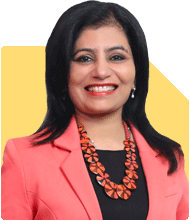Can I retire at 42 with 50 lakhs in savings?
Ramalingam Kalirajan |9758 Answers |Ask -Follow
Mutual Funds, Financial Planning Expert - Answered on Dec 02, 2024
He has an MBA in finance from the University of Madras and is a certified financial planner.
He is the director and chief financial planner at Holistic Investment, a Chennai-based firm that offers financial planning and wealth management advice.... more

Hello Sir,Can i(married Woman} retire at the age of 42 with total savings 50lacs with no responsibilities of kids.
Estimating Post-Retirement Expenses
Living Expenses: Identify all essential expenses like food, utilities, and health.
Lifestyle Costs: Include travel, hobbies, and other non-essential but desired costs.
Inflation Impact: Factor in rising costs, as inflation erodes purchasing power.
To maintain your lifestyle over the long term, your savings must generate a stable income that grows with inflation.
Longevity Considerations
Life Expectancy: Assume living till 85 or beyond to ensure funds last.
Health Costs: Medical expenses increase significantly with age. Health insurance is essential.
Planning for a longer retirement is critical to avoiding financial stress in later years.
Evaluating Your Current Corpus
Rate of Return: Choose investments that outpace inflation.
Withdrawal Rate: Limit annual withdrawals to prevent depleting funds too early.
Liquidity: Ensure access to funds for emergencies.
A Certified Financial Planner can simulate various scenarios to assess how long Rs 50 lakhs will last.
Investment Strategy Post-Retirement
Balanced Portfolio: Combine equity mutual funds and debt instruments for growth and stability.
Actively Managed Funds: These are better than index funds. They adapt to market conditions.
Avoid Direct Plans: A regular plan through a Certified Financial Planner offers better guidance.
This approach balances risk and return while ensuring long-term growth.
Tax Efficiency
Equity Funds: LTCG over Rs 1.25 lakh is taxed at 12.5%. STCG is taxed at 20%.
Debt Funds: Gains are taxed as per your income slab.
A tax-efficient withdrawal plan reduces tax outgo and maximizes returns.
Emergency Preparedness
Contingency Fund: Keep 6-12 months of expenses in liquid assets.
Insurance: Comprehensive health insurance is critical. It protects your corpus from medical emergencies.
Preparation minimizes financial shocks and ensures peace of mind.
Lifestyle and Goals Alignment
Pursue Purpose: Identify hobbies or part-time work for mental satisfaction.
Reassess Goals: Ensure your financial goals match your desired lifestyle.
Planning beyond finances ensures a fulfilling retirement.
Risks to Address
Market Risks: Volatility in investments can impact returns.
Inflation Risks: Rising costs over decades erode value.
Health Risks: Unexpected medical issues could deplete your savings.
Diversified investments and insurance mitigate these risks effectively.
Recommendations for Next Steps
Surrender Low-Yield Policies: If you hold LIC, ULIP, or investment-cum-insurance policies, consider surrendering them. Reinvest proceeds into mutual funds.
Engage a Certified Financial Planner: Create a custom plan tailored to your retirement needs.
Periodic Reviews: Reassess your finances every year to stay on track.
Planning today ensures a stress-free tomorrow.
Finally
Retiring at 42 is achievable with careful planning and disciplined execution. Focus on creating a sustainable financial strategy that considers all life’s uncertainties. Your goal is not just financial security but also a fulfilling and enjoyable post-retirement life.
Best Regards,
K. Ramalingam, MBA, CFP
Chief Financial Planner
www.holisticinvestment.in
https://www.youtube.com/@HolisticInvestment
You may like to see similar questions and answers below
Ramalingam Kalirajan |9758 Answers |Ask -Follow
Mutual Funds, Financial Planning Expert - Answered on Jan 27, 2025
Ramalingam Kalirajan |9758 Answers |Ask -Follow
Mutual Funds, Financial Planning Expert - Answered on Jan 28, 2025
Ramalingam Kalirajan |9758 Answers |Ask -Follow
Mutual Funds, Financial Planning Expert - Answered on Feb 07, 2025
Ramalingam Kalirajan |9758 Answers |Ask -Follow
Mutual Funds, Financial Planning Expert - Answered on Feb 06, 2025
Sunil Lala |214 Answers |Ask -Follow
Financial Planner - Answered on Jul 17, 2025
Sunil Lala |214 Answers |Ask -Follow
Financial Planner - Answered on Jul 17, 2025
Archana Deshpande |117 Answers |Ask -Follow
Image Coach, Soft Skills Trainer - Answered on Jul 17, 2025
Dr Nagarajan J S K |1829 Answers |Ask -Follow
NEET, Medical, Pharmacy Careers - Answered on Jul 17, 2025
Dr Nagarajan J S K |1829 Answers |Ask -Follow
NEET, Medical, Pharmacy Careers - Answered on Jul 17, 2025
Dr Nagarajan J S K |1829 Answers |Ask -Follow
NEET, Medical, Pharmacy Careers - Answered on Jul 17, 2025
Dr Nagarajan J S K |1829 Answers |Ask -Follow
NEET, Medical, Pharmacy Careers - Answered on Jul 17, 2025
Dr Nagarajan J S K |1829 Answers |Ask -Follow
NEET, Medical, Pharmacy Careers - Answered on Jul 16, 2025
Dr Dipankar Dutta |1755 Answers |Ask -Follow
Tech Careers and Skill Development Expert - Answered on Jul 16, 2025
Nayagam P P |8925 Answers |Ask -Follow
Career Counsellor - Answered on Jul 16, 2025





















